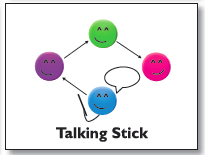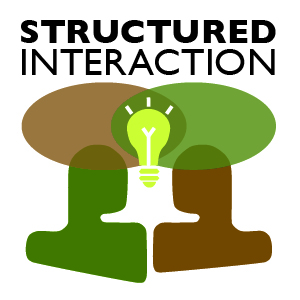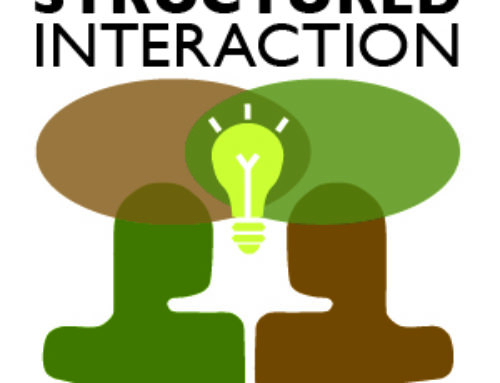In this series, we discuss Student Interaction Routines, which are task-based strategies that help ensure each student has abundant strategic practice using new language for meaningful purposes. Developing a robust wheelhouse of interaction routines enhances student engagement and increases productive talk time.
English learners build their skill and adroitness with language when they have lots of “mileage on the tongue.” Talking Stick is a structured routine that provides ample opportunities for students to develop interaction skills while using the target language numerous times in a session. This is a great choice when students need to build fluency or are struggling with high leverage language. Straightforward, easy to set up, and effective at any grade level, this routine ensures that all students actively speak and listen – so every voice is heard.
In the simplest version of this routine, students sit in groups of 3–4 and are ready to practice taught language together. The guidelines are:
- Speak only when holding the talking stick.
- Listen to the person with the talking stick.
- Take turns by passing the talking stick in a clockwise direction.
- Signal as a group when done.
Discuss and model how to be a good listener, and hold students accountable for using appropriate body language to demonstrate they are really listening. Develop routines for distributing and collecting the talking sticks and for forming groups.
Mix it up!
Once students are accustomed to the simple version of Talking Stick, variations can easily be added:
- Students stand and take their turn when they have the stick.
- Before moving to the next player, the group echoes what the speaker said. They can echo all together or take turns echoing to cause a “ripple effect.”
- Students can be challenged to say something that hasn’t been said prior to their turn. This ups the ante on listening.
- Students pass the stick in a random order.
This structured routine lends itself to language monitoring. In each group, one clearly identified speaker uses the target language at a given time. Teachers can listen in on individual students to easily gather formative data.

Find more details on Talking Stick and other interaction routines in the Cue Card Booklet.

Susana Dutro, Co-founder and CEO
Donna Smith, Director of Research and Communications and District Support Lead
This blog is one in a series on Student Interaction Routines. Read the additional installments:
Growing English Proficiency: What’s Practice Got to Do with It?
Growing English Proficiency: Numbered Heads Together
This blog was previously published with the title, “Blog Series: Empowering students to grow their language – Every Voice Is Heard: Talking Stick.”



